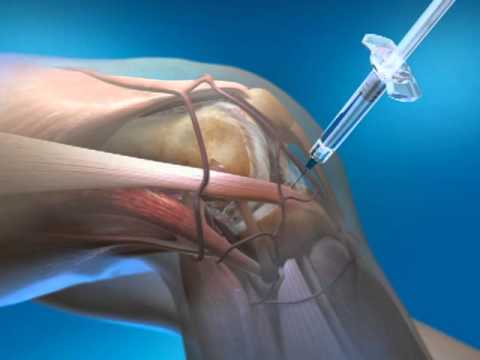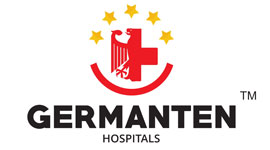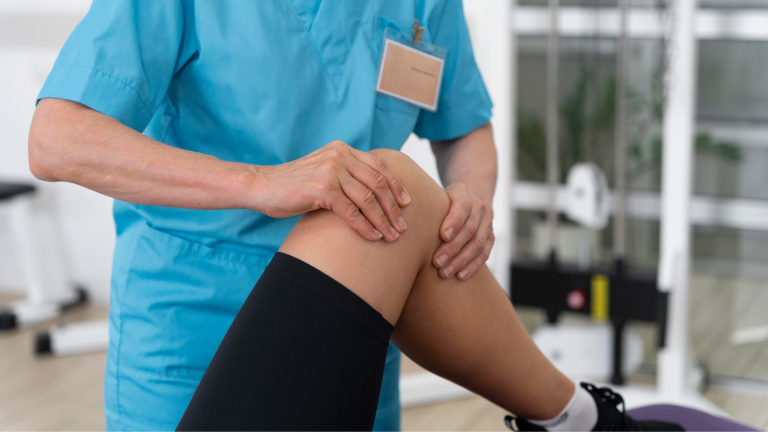ALTERNATIVE TREATMENTS FOR JOINTS, BACK AND NECK PAINS :

Back pain, Disc Prolapse, Knee Arthritis and Joint pain are very common, irrespective of the age. Most of these cases can be cured using conservation treatment and changes in life style. Osteoarthritis of Knee and the Spondylosis of spine may cause stiffness or pain in the neck or back. It may also cause weakness or numbness in the legs or arms and for severe cases it effects spinal nerves or the spinal cord. Usually, the back discomfort is relieved when the person is in lying down position.
COMMON CONDITIONS CAUSING NECK & BACK PAIN
- Sciatica
- Cervical & Lumbar disc prolapsed
- Cervical & Lumbar spondylosis
- Spondylosis / Disc Prolapse
- Sacroiliac Arthritis
- Lumbago
- Vertigo ..Etc
- Spinal stenosis
- Degenerative Disc Disease
- Facet Arthropathy
- Common Conditions Causing Joint Pains
- Knee osteoarthritis
- Rheumatoid arthritis
- Rheumatology
Moist heat sources include warm baths and washcloths soaked in warm water. Soaking in a warm tub can be a good way to apply heat to all parts of the body at once, especially if you ache all over with fibromyalgia or if you have arthritis in several joints. Applying a cold compress can reduce pain and swelling
HOW CAN I MAKE ARTHRITIS BACK OR KNEE PAIN GO AWAY?
Exercise, Weight Loss.
Eat well. To stay as healthy as possible, give your body the best nourishment it needs.
Improve your posture. Good posture can prevent future arthritis pain.
Stay active. Regular exercise strengthens muscles that support the joints and improves flexibility and balance. Take a break.
Nonsteroidal anti-inflammatory drugs (NSAIDs).
Hyaluronic acid injections.
VISCOSUPPLEMENTATION
If all other treatments prove ineffective or are no longer effective as your osteoarthritis worsens, doctors may need to consider more aggressive treatments.
In the search for less invasive treatments that provide greater relief, researchers discovered the benefits of lubrication injections, or viscosupplementation. Viscosupplements are doses of hyaluronic acid that are injected into the knee and into the synovial fluid. This is a relatively new form of treatment for knee OSTEOARTHRITIS. Viscosupplementation has become more popular and more widely accepted, and is being used to treat symptoms of mild to moderate Osteoarthritis of the knee.
HOW VISCOSUPPLEMENTATION WORK
People with osteoarthritis of the knee have lower levels of hyaluronic acid in their synovial fluid. What fluid does remain in the joint is often thinner and less effective than fluid in healthy joints. It is not able to protect the cartilage and bone from grinding and damage as well as it once could.
For each dose of a viscosupplement, a doctor injects hyaluronic acid (also called hyaluron or hyaluronate) into the knee joint’s synovial fluid.
The additional hyaluronic acid fills the joint area and increases lubrication in the joint, making movement much easier. Researchers also think that the injection of hyaluronic acid may stimulate the body to produce more of its own hyaluronic acid, which will further cushion the joint and make the effects of the injections last longer.
Viscosupplementation is ideal for people who have mild to moderate osteoarthritis of the knee. It may be especially useful for people who have not responded to other osteoarthritis treatments, such as physical therapy, weight loss, pain relievers, and corticosteroid injections.
CARTILAGE TRANSPLANT
Cartilage cells are vital as cushions inside the joints of the body. Healthy cartilage tissue keeps joints smooth, flexible and pain free. If the cartilage tissue becomes damaged, this damage tends to be permanent. Joints become painful and lose their flexibility. Cartilage cannot regenerate naturally inside the body. After some time the bones start to collide. The joints start to become inflamed and permanently stiff, unless a prosthetic joint is implanted. This painful process represents the irreversible development of osteoarthritis.
So Replacing lost knee or Joint cartilage with tissue grafts may help restore normal knee or joint function and may delay or even eliminate the need for a knee replacement.
EFFECTIVENESS OF CARTILAGE TRANSPLANT
- Immediate and lasting pain reduction
- Potentially slow down future cartilage degeneration
- Restoration of resilience
- Improved agility
- Reconstruction of the cartilage layer using new cartilage through a natural process
- Prevention of or delay in the need for joint replacement
STEM CELL THERAPY
Painful Joints and discs in the neck or low back are common causes of severe disability and back pain. Historically, therapies did not exist to regenerate the degenerative process in a vertebral disc, often leaving surgical intervention as the only option if other non-operative treatment options have failed. In selected patients, there are better ways to treat spinal and Joint disease. Regenerative therapies for the spine and Joints are the future for spinal and joint treatments. We are excited to offer innovative techniques as new and improved ways to try to heal spinal and joint problems without having to undergo surgery. Regenerative therapy options hold wonderful healing potential and represent the future of modern medicine.
THIS IS HOW IT WORK
We obtain a patient’s own stem cells by aspirating tissue from the patient’s hip bone or from their fat cells. These cells are centrifuged down to identify and separate specific primitive cells that will help heal tissues. Stem cells are then injected into the disc, stimulating healing of the disc by using these primitive blood cells to stimulate regeneration of the collagen within the disc. We are excited to report improvements in our patients treated with stem cells.
Not all patients will be a candidate for these disc regeneration procedures. For those whom are ideal candidates, this provides great hope with reduction in pain and improved quality of life without the need for major surgery. We are excited about these great advances in health care and look forward to helping you live pain free.
STEM CELL INJECTIONS ARE MOST COMMONLY USED FOR TREATMENT OF THE FOLLOWING CONDITIONS:
- Osteoarthritis of the joints including knee, hip, shoulder, and ankle joints
- Chronic partial rotator cuff tears
- Persistent partial tendon tears, such as tennis elbow, plantar fasciitis, quadriceps and patellar tendon tears
- Muscular tears
- Meniscal (cartilage) tears in the knee
- Discogenic back pain
- Spinal facet pain
- Chronic radiculopathy (pinched nerve)
- Sacroiliac joint pain
STEM CELL INJECTIONS ARE MOST COMMONLY USED FOR TREATMENT OF THE FOLLOWING CONDITIONS:
- Immediate and lasting pain reduction
- Potentially slow down future cartilage degeneration
- Restoration of resilience
- Improved agility
- Reconstruction of the cartilage layer using new cartilage through a natural process
- Prevention of or delay in the need for joint replacement
CARTILAGE TRANSPLANTATION
Cartilage cells are vital as cushions inside the joints of the body. Healthy cartilage tissue keeps joints smooth, flexible and pain free. If the cartilage tissue becomes damaged, this damage tends to be permanent. Joints become painful and lose their flexibility. Cartilage cannot regenerate naturally inside the body. After some time the bones start to collide. The joints start to become inflamed and permanently stiff, unless a prosthetic joint is implanted. This painful process represents the irreversible development of osteoarthritis.
So Replacing lost knee or Joint cartilage with tissue grafts may help restore normal knee or joint function and may delay or even eliminate the need for a knee replacement.
EFFECTIVENESS OF CARTILAGE TRANSPLANT
- Immediate and lasting pain reduction
- Potentially slow down future cartilage degeneration
- Restoration of resilience
- Improved agility
- Reconstruction of the cartilage layer using new cartilage through a natural process
- Prevention of or delay in the need for joint replacement
HOW ARE THE STEM CELLS INJECTED ?
The area of injury is first identified using ultrasound or fluoroscopy. The area is then sterilized, and the skin above the area is numbed with a novocaine-type solution. Using ultrasound or fluoroscopic guidance, the needle is guided to the area of injury, and the stem cell solution is injected. All the regenerative injections performed at our practice are performed under image guidance with ultrasound or fluoroscopy to confirm accurate placement of the stem cells
WHEN WILL I SEE BENEFIT FROM THE PROCEDURE?
The benefit is usually seen approximately two to three months after the whole treatment protocol has completed; however, you may start to notice the benefit sooner than this.
HOW MANY INJECTIONS DO I NEED?
In most cases, patients respond very well to just one treatment; however, the patient may require two to three injections. We never perform more than three injections within a span of 12 months.
OSTEOARTICULAR TRANSFER SYSTEM
The Osteoarticular Transfer System, commonly known as OATS, replaces damaged cartilage in the knee with healthy cartilage from another area of the joint, relieving pain and restoring movement and function to the joint. A mosaicplasty is the name for a general procedure that treats severe cartilage damage, and the OATS procedure is one type of mosaicplasty.
Although cartilage is essential to smooth, painless movement of the joints, some areas have a more critical need for the support and cushioning provided by the cartilage. During the OATS procedure, small plugs of healthy cartilage are removed from areas of the joint that are not in critical need, and transferred to the area of damaged cartilage.
The OATS procedure is ideal for patients with small areas of cartilage damage that can be easily repaired with a graft. Widespread cartilage damage cannot usually be treated with this procedure, since there may be insufficient amounts of healthy cartilage available.
After the OATS procedure, patients will need to undergo a lengthy physical therapy program in order to restore range of motion and relieve pain and swelling on the joint. Most patients will be on crutches for 6 to 12 weeks after surgery before they can successfully bear weight on the joint again. Long-term follow-up care will be required in order to maintain the results of this procedure.
SPINE CONDITIONS TREATED AT OUR HOSPITAL
Our dedicated team of spine surgery consists of orthopedic spine surgeons, neuro surgeons, neuro physicians and physiotherapists form a comprehensive group. Spine surgery deals with spectrum of disorder related to vertebral column and spinal cord. Conditions treated by our Spine Surgery team include
- Slipped disc/herniated disc
- Spinal stenosis surgeries – Lumbar & Cervical
- Scoliosis/kyphosis
- Sciatica
- Spondylolisthesis
- Degenerative disc disease
- Traumatic disorders
- Phylogenic infections or Tuberculosis(most common) or any other
- Various tumors affect spine, Benign / Malignant
- Previously operated / failed back surgery
- Emergency spine traumas
- Complex spinal deformity corrections – Scoliosis , Kyphosis & kyphoscoliosis
- Degenerative spinal disorders
- Lumbar & Cervical
- Interbody Fusions
- Minimally invasive spine surgeries
- Vertebroplasty & Kyphoplasty
- Minimal Access Spine Technologies (MAST)
- Dynamic stabilisation
- Osteoporotic fractures
- Navigation guided spine surgeries
- Pain management services





